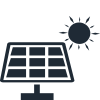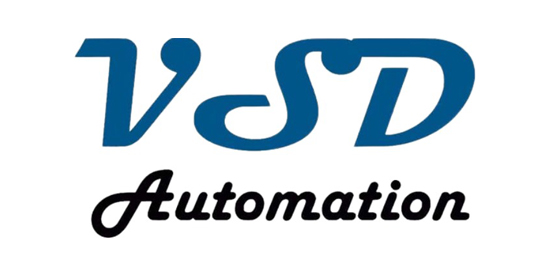
Battery Energy Storage System
End-to-End Solution
The advantage of New Energy Integration Charging Station
Flexible customization
Standardized and modularized design concept, product combination on demand, customized integrated solutions for new ev charging stations;
Rapid deployment
Large-scale, integrated design, easy to expand, move, maintain and quickly install and deploy;
Multi energy complementation
Complementary power from wind-solar energy; Supplementary power from utility grid; Standby power from lithium battery cabinet.
Prior utilization of new energy
PV components provide high-quality ac power to load by PV controller and the host , while the host maintain the storage battery real time, ensure the battery energy reserve.
Cost reduction
Small size and high efficiency, reducing equipment investment and operating costs;
Diversified income
Diversified income, such as charging service revenue, advertising revenue, value-added services, policy subsidies, etc;
Learn the truth of "new energy integration charging station"
New energy integration charging station adopts modularization, standardization of design concept, according to the user’s demand to achieve dynamic growth, which can realize the priority use of new energy, also can get return through device way when no charging. The new ev charging station consists of PV module, energe storage battery, DC confluence current cabinet, bidirectional PCS, low voltage switch cabinet and charging infrastructure, which is standard and electric vehicle grid integration station with good flexibility, high level of integration and Rapid deployment.
Our product
End-to-End Solution
Power Conversion System (PCS)
The SCU multifunctional modular MPCS is tailor-made for energy storage systems, and provides more functions based on the realization of energy storage, such as off-grid uninterrupted power supply, power quality compensation, ev grid integration, integrated access of new energy and comprehensive utilization of cascade batteries. Make our energy storage system reflect higher value.
01
Lithium ion battery system
The complete lithium battery system brings revolutionary safety protection. Relying on the advantages of lithium-ion battery’s high energy density, overcharge and overdischarge resistance, and high temperature resistance, combined with the active balance BMS battery management system and three-level electrical protection measures, the battery system is durable, Safe and reliable operation provides long-term stable power protection for the load.
02
Satellites Charger
Satellites Charger consists of two parts: a DC charging stack and a DC charging terminal. It flexibly distributes output power according to different models, reduces equipment and power supply inputs, makes rational use of the site, and enjoys the same smart, convenient and efficient charging experience with less investment.
03
System Working Mode
Prior utilization of new energy
Battery discharge
Supplementary power from utility grid
What is the prospect of New Energy Integration Charging Station?
For the development of renewable energy, countries and regions all over the world have clear plans. China strives to peak carbon emissions by 2030 and achieve carbon neutrality by 2060; the EU is expected to raise its carbon emission reduction target to 60% by 2030, and the corresponding renewable energy consumption target is raised from 32% to more than 40%.
It is estimated that by 2050, renewable energy power generation will become the world’s largest energy carrier, accounting for 86% of the world’s total power generation. Among them, the cumulative installed capacity of photovoltaic will reach 8519GW, accounting for 43% of the total installed capacity of global electricity.
At present, there is a big gap in this goal in many countries, so it is necessary to support enterprises to enter the photovoltaic industry through subsidies, so that its costs will be further reduced, and the development of photovoltaics will be promoted faster.
In addition to reducing costs and increasing efficiency in the photovoltaic module itself, thanks to the continuous reduction of energy storage costs, the combination of photovoltaic + energy storage can also help the development of a higher proportion of photovoltaics. In this regard, the following issues also need to be resolved to continue to reduce LCOE, support the grid, and integrate energy storage. Some solutions are also needed.
Continuously reducing LCOE requires continuous component innovation, system design optimization, and reduction of non-technical costs, such as land management fees, which are very important for photovoltaic development.
It is estimated that by 2050, renewable energy power generation will become the world’s largest energy carrier, accounting for 86% of the world’s total power generation. Among them, the cumulative installed capacity of photovoltaic will reach 8519GW, accounting for 43% of the total installed capacity of global electricity.
At present, there is a big gap in this goal in many countries, so it is necessary to support enterprises to enter the photovoltaic industry through subsidies, so that its costs will be further reduced, and the development of photovoltaics will be promoted faster.
In addition to reducing costs and increasing efficiency in the photovoltaic module itself, thanks to the continuous reduction of energy storage costs, the combination of photovoltaic + energy storage can also help the development of a higher proportion of photovoltaics. In this regard, the following issues also need to be resolved to continue to reduce LCOE, support the grid, and integrate energy storage. Some solutions are also needed.
Continuously reducing LCOE requires continuous component innovation, system design optimization, and reduction of non-technical costs, such as land management fees, which are very important for photovoltaic development.
What are the significant advantages of New Energy Integration Charging Station?
The key to development “solar+storage+charging“ is the power grid
Summary of major policies of energy storage industry
















